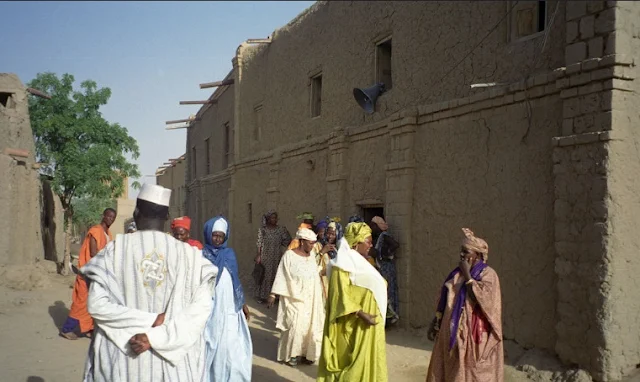Timbuktu Elite University in the Desert
Timbuktu is located close to the river Niger which soon became known as a place for business due to its location.
Timbuktu Elite University in the Desert
Founded by the Imagharen Tuareg, Timbuktu Mali was established in the 12th century, almost nine hundred years ago as a place where nomads could pasture and water their camels after traveling through the Sahara desert.
 |
| Tuaregs in Timbuktu, Mali |
Three important mosques were constructed in Timbuktu, Djingareyber, Sankore, and Sidi Yahia. The Djingareyber Mosque, the initial construction in 1327, the Sankore Mosque or The University of Sankoré date it was constructed is unknown, but probably in the 14th century, between 1325 and 1433, not long after the Djingareyber was constructed, and the Sidi Yahia Mosque, was built around 1400. The three mosques compose the famous University of Timbuktu.
Beginning in the 15th century Timbuktu established itself as an important educational, spiritual, cultural, and business hub. Timbuktu was famous for educating important scholars who were well known throughout the Islamic world. Timbuktu in the 16th century became the center of education in Africa characterized by the high level of education achieved by its students, clerics, and scholars.
The reign of Askia al-Hajj Muhammad, saw Timbuktu reach its political and intellectual height. Askia al-Hajj Muhammad better known as Askia the Great was a well-organized and shrewd administrator encouraging learning and literacy while fostering trade and commerce.
The eminent scholar Ahmed Baba produced many books on Islamic law during this time period. Mahmoud Kati published Tarik al-Fattah and Abdul-Rahman as-Sadi published Tarik as-Sudan two history books which are still widely used.
 |
| Djingareyber Mosque Timbuktu, Mali by emilio labrador |
The reign of Askia al-Hajj Muhammad, saw Timbuktu reach its political and intellectual height. Askia al-Hajj Muhammad better known as Askia the Great was a well-organized and shrewd administrator encouraging learning and literacy while fostering trade and commerce.
The eminent scholar Ahmed Baba produced many books on Islamic law during this time period. Mahmoud Kati published Tarik al-Fattah and Abdul-Rahman as-Sadi published Tarik as-Sudan two history books which are still widely used.
The Moroccan invasion in 1590 ended Timbuktu’s golden era of scholarship. Ahmed Baba was exiled with his entire family to Morocco, much of his extensive library was destroyed. Centuries of unrest and conflict continued. Timbuktu came under Fulani control, then occupied by the French in 1894. French rule lasted until independence in 1960.
Timbuktu Elite University in the Desert
Timbuktu was an intellectual and spiritual capital and a center for the propagation of Islam throughout Africa in the 15th and 16th centuries.
Timbuktu is located at the gateway to the Sahara desert in Africa.
In 2012, in response to armed conflict in the region, Timbuktu was added to the UNESCO List of World Heritage in danger.





